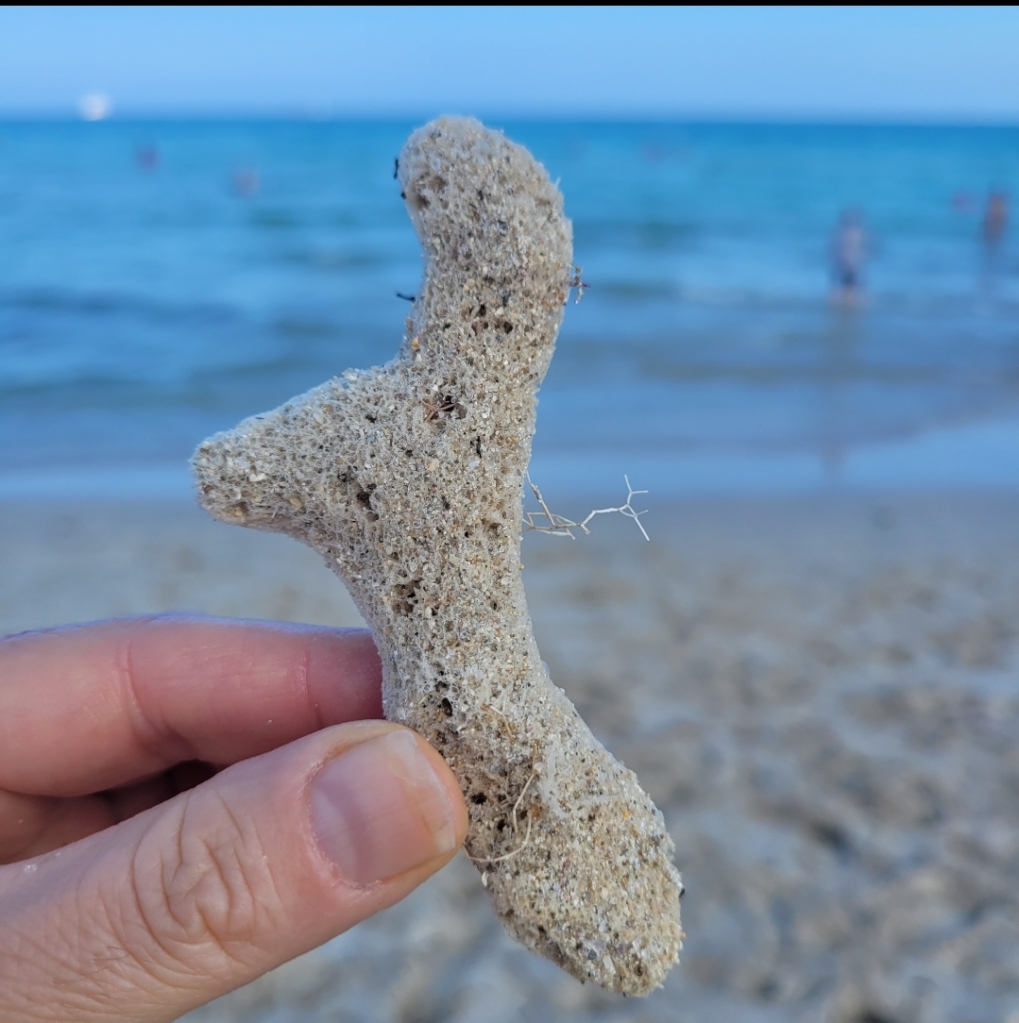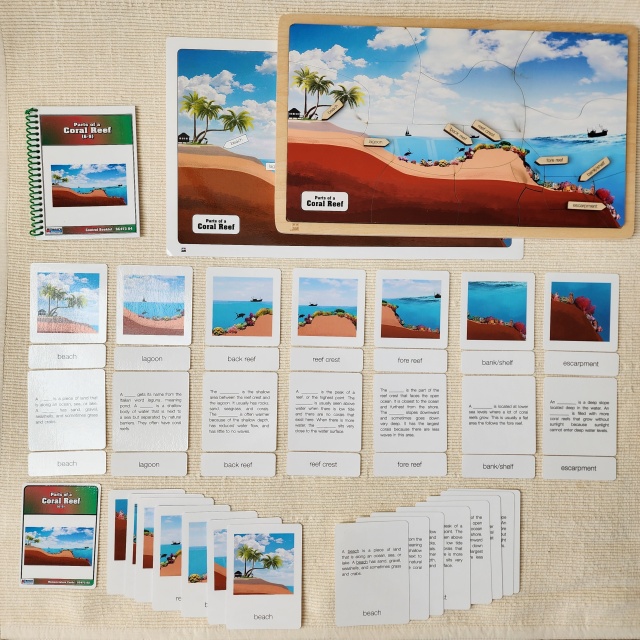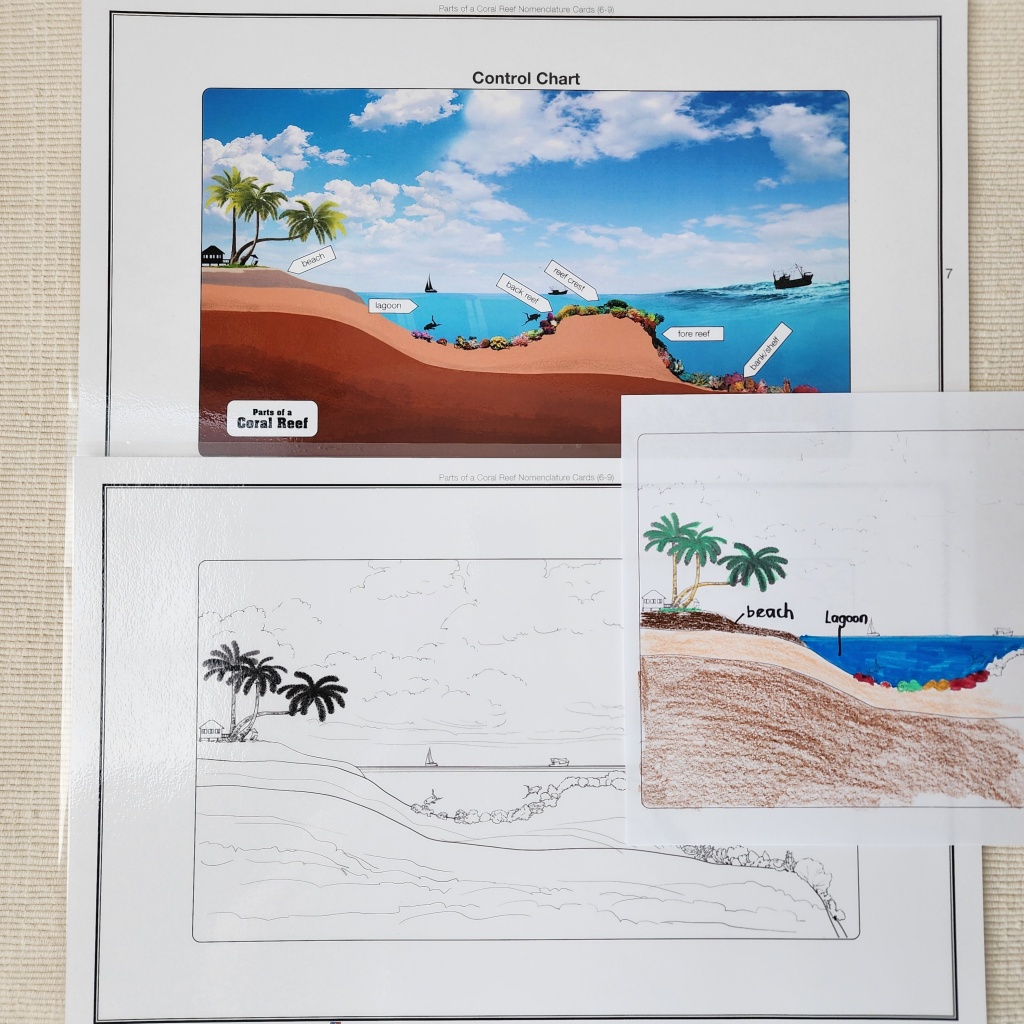Biology, Geography, 3-6 & 6-12
Parts of a Coral is a neat material from Alison’s Montessori, which I wish we had prior to visiting the beach last summer! We enjoyed collecting sponges and fingered colors on the beach of Miami. Having studied the coral reef using Alison’s Montessori materials has given us a clear idea of how a coral reef is laid out, and how important it must be for the ecosystem. Using the Coral Reef complete set will help your children develop an appreciation for this vital endangered ecosystem, and also ignite a desire to personally experience visiting natural habitats. The parts of a coral are simple and clear; easily manageable for an older primary learner (5-6) or an elementary learner (6-12). I would offer this material to children ages 9-12 as well because of the need for repetition to maintain essential knowledge.


Where do we find the most exciting coral reefs? Oceania hosts some of the most abundant coral reefs, which average 50,000 km square. Scientists believe that the coral reef is at significant risk of disappearing in the following decades due to the rise in oceanic temperatures, pollution, acidification, and other environmental factors. Learning about the layout of a coral reef may help children understand its vital role. Coral reefs are homes to millions of marine life, which sustain food webs and biodiversity. They also serve as natural coastline barriers. Coral reefs serve as buffers against waves, storms, and floods. There are three main types of coral reefs: fringing, atoll, and barrier reef. Each reef can be divided into parts which are defined based on location, and abiotic and biotic factors such as temperature, water composition, and exposure to light. These factors greatly influence the coral reef population.
Materials

- Parts of a Coral Reef Puzzle with Nomenclature Cards 3-6
- Parts of a Coral Reef Puzzle with Nomenclature Cards 6-9
- Parts of a Coral Reef Puzzle
- Parts of a Coral Reef (Nomenclature Cards) (3-6)
- Parts of a Coral Reef (Nomenclature Cards) (6-9)
How to Use the Materials
Parts of a Coral Reef features seven parts of a typical coral reef: beach, lagoon, back reef, reef crest, fore reef, bank or shelf, and escarpment. Learners are familiar with the beach and perhaps the term lagoon, which is a good starting. You may explain that it exists two types of lagoons, atoll and coastal lagoons. Print large pictures of different lagoons to share with your learners. The back reef is located in the shallow parts of a lagoon and hosts small corals. The reef crest is the highest elevated part of a coral reef; due to greater exposure to air, light, and waves, the reef crest is the least populated part of the coral reef. The fore reef and bank are the most abundant location in a coral reef. A greater diversity of organisms thrive mostly because the fore reef isn’t affected by disturbing factors such as freshwater runoffs and sediment. Finally, the furthest part from the shore is the escarpment which consists of a vertical slope exceeding 45 degrees of inclination and reaching deep oceanic depth. No coral thrives in this area as light is not abundant.



As a guide, you want to introduce the topic using the wooden puzzle in conjunction with the nomenclature booklet which contains the descriptions for each part. Once your learners have been familiarized with the different parts of a coral reef, you may advise them on how to expand their study. They may choose to re-read the descriptions in the booklet and test their knowledge using the nomenclature cards, color and label a copy of the blackline master chart, fill out their own copy of the booklet, reconstruct the puzzle and label it, or research specific parts of a coral reef.
This concludes my post on the Coral Reef topic! I hope your learners will enjoy this material as much as we did! Subscribe below for more posts on Montessori materials.
